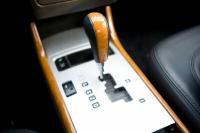Build a physics generator as a demonstration model
You can build a generator yourself with simple means and thus demonstrate impressively in physics how electricity is generated from movement.
Components for the generator
The generator is supposed to show in physics class that a coil that is moved in a magnetic field generates electricity:
- Coil: Bend approx. 5 cm from each end of the welding wire in the right angle ab, the two ends must be bent in opposite directions. Drill a small hole in the face of the wooden strip. Glue a kinked end into it. Drive in the nail on the other side, it should protrude about 2 cm from the wood. Strip a piece of the coil wire and solder it to the nail. Wrap the wire around the bar several times. Solder the other end to the welding wire.
- Storage of the spool: So that the spool can be rotatably stored, thread a safety pin over the welding wire in the eyelet. The counter bearing is then the other safety pin into which the nail is inserted.
- Crank: The welding wire is the crank for the generator. So that the generated electricity cannot be diverted through you, you have to isolate the crank. The easiest way to do this is to put on some heat shrink tubing and shrink it on. You can also coat the handle of the crank with varnish or wrap it with insulating tape.
- The lamp should use little power to burn, a very weak flashlight lamp is correct.
Build a wind turbine - this is how a clear model succeeds
If you want to build a wind turbine as a functional model yourself, you should ...
Instructions for the demonstration model in physics
The construction is quite simple and can even be done during the physics lesson.
- Place the coil on the board. Fold in the tips of the open safety pin so that you can turn the bobbin with the crank.
- Remove the coil from the board. Make indentations between the safety pins in which you will glue the magnets. Make sure that the same poles are always on top.
- Cut the electric cable in half. Solder the ends of the cables to the safety pins and to the socket of the lamp.
- Put the coil back in place.
If you now turn the crank, you move the coil through a magnetic field and electricity is generated. The lamp starts to burn. Since the generator produces alternating current, you can in physics clearly demonstrate the pulsation of the current at the flickering of the lamp by changing the speed.


